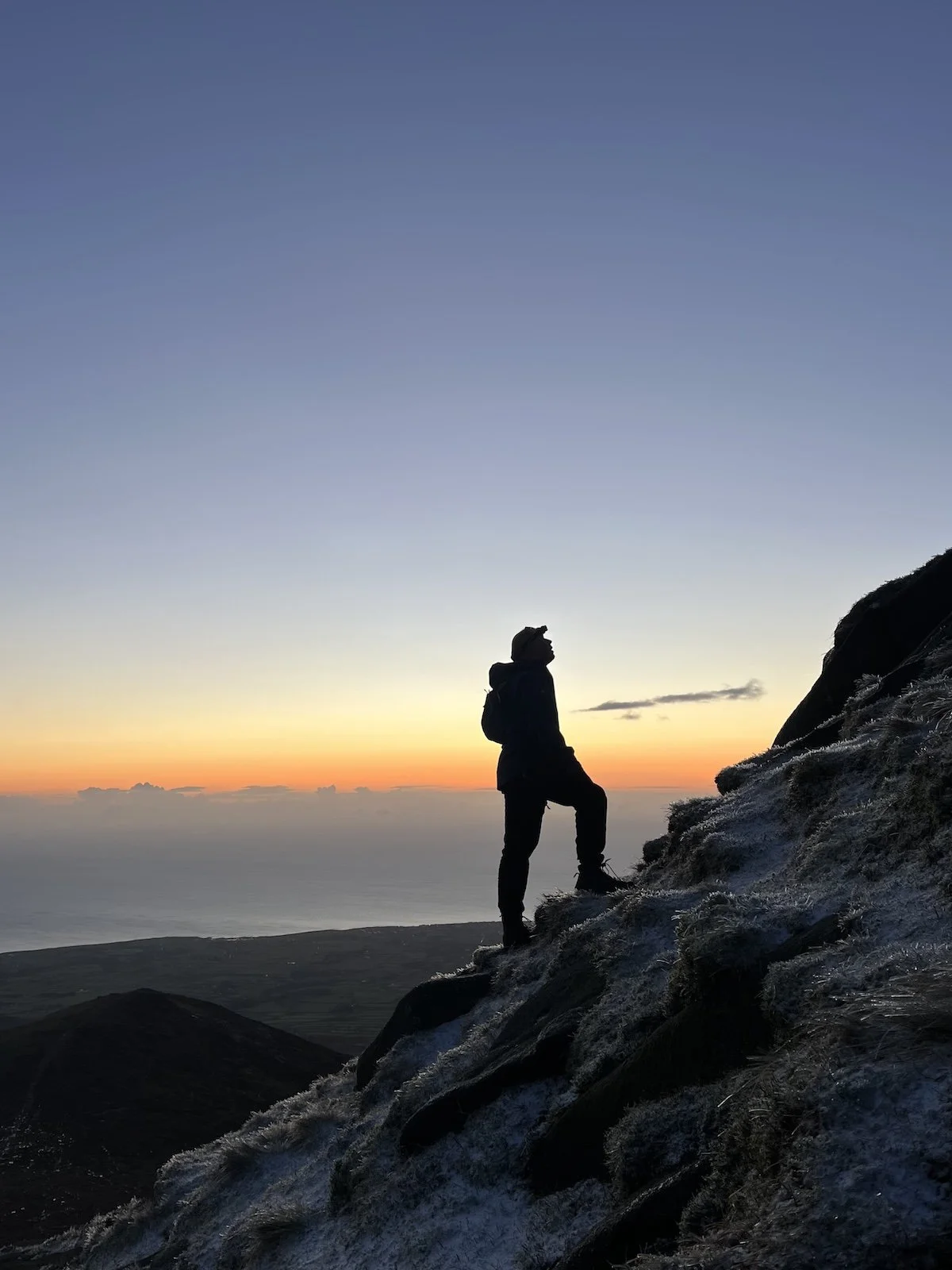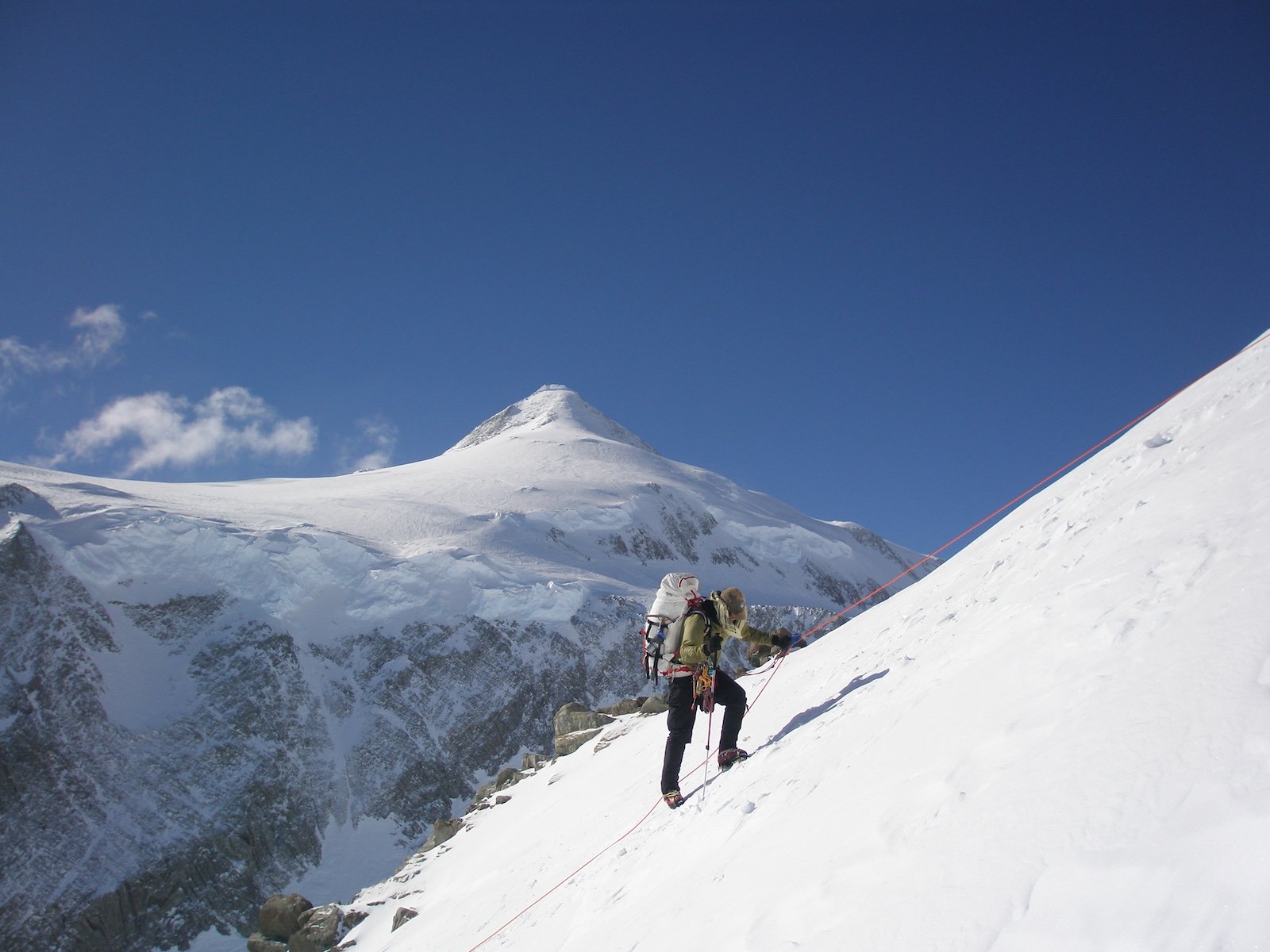The Expedition
This December 2025 I am taking on the challenge to become the first woman with type 1 diabetes to summit the highest mountain in Antarctica, Mount Vinson.
Mount Vinson:
4,892 metres (16,050 feet)
The two-week expedition will involve exposure to average temperatures of -30oC, high winds, altitude and technical terrain. I will be carrying a heavy pack, pulling sleds with gear and traversing up fixed lines and glaciers.
Vinson is part of the wider seven summit challenge, which involves summiting the highest mountains on each of the seven continents.
Latitude: 78.5250° S
Longitude: 85.6167° W
Preparation
Over the coming months I will be training 5-6 days per week, building and maintaining a strong strength and endurance base in the gym and distance running. I will also be training in the mountains, spending days carrying a heavy pack as well as refreshing my snow and ice skills in Winter.
The expedition will last two weeks and will involve hiking for several days carrying a heavy backpack as well as pulling a sled over ice and snow in temperatures that can get a low as -40oC (-40oF). Having the right equipment to deal with these conditions is a vital aspect to Antarctic expeditions. This will include a specialised down-filled jacket and trousers, crampons, insulating boots, gloves, face mask, googles, hat, etc.
I will also be planning the management of my diabetes and will be organising back-ups of all my diabetes supplies including my insulin pump, insulin pens, insulin and blood sugar sensors, which is essential in such a remote part of the world.
Getting to Antarctica
I will begin my journey in December by flying to Punta Arenas, in the Patagonia region of southern Chile. I will spend one or two days here meeting the rest of the team and doing a final check on all our equipment. From here, we fly direct to Union Glacier in Antarctica on a Boeing 757 which is a 4-5 hour flight.
We land on a naturally occurring blue ice runway at Union Glacier Camp before boarding a smaller Twin Otter plane on skis that will take us to Mount Vinson Base Camp (approximately a 45-minute flight). Weather delays are not uncommon here and it can often be unpredictable. As we fly into Base Camp this will give us our first view of Mount Vinson and the spectacular and beautiful mountain range.
Image credit: Iain Rudkin/ALE
Base Camp
Once we arrive at Base Camp which is at 2133m/6998ft, we will set up camp and begin the acclimatisation process. This involves adjusting to the thinner air at high altitude and the low temperatures. The team will spend a few days at Base Camp, typically with two people per tent. In December, Antarctica has 24 hours of daylight but strong winds and harsh weather is possible at any time with average temperatures typically around -15oC (5oF) here.
Over the next few days, I will be looking closely at how my blood sugars are reacting to the high altitude and low temperature, and I will make any adjustments to my insulin regime that are needed. A key component of mountaineering in extreme environments with type 1 diabetes is ensuring that insulin does not freeze, as it essentially becomes ineffective if this occurs. Insulin freezes at 0oC (32oF). To prevent this from happening, I will store it in temperature regulating packs which I will carry inside insulated pockets when climbing, and in my sleeping bag at night. I will also divide some of it up between two or three team members, as well as bringing ample backup supplies.
This is also the time when I plan to educate the guides and my team members about my diabetes. This includes explaining to them the signs of both high and low blood sugar, how to check my blood sugar and how to administer both insulin and glucogen.
Low Camp
After several days at Base Camp, I will begin my ascent to Low Camp with the team, gaining elevation gradually to 2750m/9022ft and taking on the physical demand of pulling a heavy sled equipped with my gear up the Branscomb Glacier. After spending a few hours at Low Camp, I will return to Base Camp.
The ‘climb high, sleep low’ principal of acclimatisation will be applied. This works by allowing ourselves to be exposed to lower oxygen levels during the day at higher altitude, whilst benefitting and recovering better from higher oxygen levels overnight.
This will be the first strenuous day of climbing and, from previous experience, I find that the increased stress on my body with increasing altitude (due to reduced oxygen levels) tends to cause my blood sugars to increase. I will be constantly monitoring my blood sugar levels and adapting and responding to these changes as they occur, which includes testing during the night.
Image credit: Iain Rudkin/ALE
High Camp
From Base Camp, I will go back to Low Camp where I will spend one night to further acclimatise to the increasing altitude. The next stage of the climb involves a lot of technical challenges up the Branscomb Ridge to reach High Camp at 3770m/12,369ft.
My backpack will be heavy as it is too steep to pull sleds and all necessary equipment needs to be transported. I will be relying on crampons and fixed ropes to climb steep, icy and snowy terrain with up to 40 degree inclines, gaining 1000m of vertical elevation.
This section will require lots of care and strategy to avoid cold injury (such as hypothermia or frostbite) and ensure my blood sugars are well controlled. It is particularly important to avoid hypoglycaemia (low blood sugar) so I will have plenty of accessible snacks to avoid this from happening. As the temperature drops, I’ll also need to ensure my insulin stays warm enough. Checking blood sugar becomes more difficult as the temperature drops, as removing glove layers becomes increasingly risky. Therefore, trusting my body and how I feel is very important in these conditions and is something I will incorporate into training ahead of the expedition.
Image credit: Chris Nance/ALE
Summit Push
Image credit: Mark Postle/ALE
I will rest and sleep at High Camp before making the gruelling journey to the summit of Mount Vinson at 4892m/16,050ft. The round trip from High Camp to the summit and back to High Camp can take up to 12 hours, with an average temperature on the summit of -40oC (-40oF). From previous expeditions, the summit push is by far the hardest day of the expedition. The air is thinner, the temperatures are lower and I am already exhausted from several previous days of hiking in harsh conditions. It can be difficult to catch a breath and progress can be very slow at times. In addition, high altitude can affect cognitive function, including decision-making.
I have learnt a lot from previous expeditions about how my body and blood sugars respond to altitude and harsh environments, which will be invaluable on the summit push. With lower oxygen levels, nausea and reduced appetite can set in, which I have found challenging on previous expeditions as getting enough fuel on board is important both for the climb and blood sugar management.
I will be checking my blood sugars as much as I can and when safe to do so, to ensure it does not go too low or high. To ensure my insulin does not freeze, I will store it against my body for additional heat. Once I reach the summit, I will take in the incredible views of the surrounding peaks which rise from the vast ice sheet below and reflect on the journey I have been on to get there. We will rest for a night at High Camp before packing up our tents and gear and returning back down the mountain to Low Camp and then to Base Camp.
Image credit: Dylan Taylor/ALE
Getting home
From Base Camp, we will return to Union Glacier bringing everything with us as no litter or waste can be left behind on the mountain. From Union Glacier we will then fly back to Punta Arenas in southern Chile and then back home where I plan to take a well-earned rest.
The impact of long, difficult expeditions tends to have a lasting effect on my blood sugars for several weeks after I am finished – I require much less insulin due to increased insulin sensitivity which can subsequently predispose to hypoglycaemia (low blood sugar).









